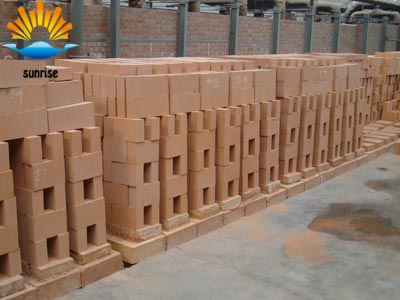Product
Fused Cast AZS Block
AZS Casting Type
AZS Ramming Materials
Fused Cast AZS TY-AZS41
Fused Cast AZS TY-AZS36
Fused Cast AZS TY-AZS33
Fused Cast Alumina Block
Fused cast Alumina Block TY-H
Fused cast Alumina Block TY-A
Fused cast Alumina Block TY-M
Fused Cast High Zirconia Block
Fused Cast Skid Rail Block
Silica brick
Magnesia Series Brick
Bonded Refractory Block
High alumina And Fire clay bricks
Insulation Series Brick
Ceramic Fiber Products
Contact Details
- 0086 371 63838939
- 0086 371 63835539
- sales@sunriserefr.com
- tkfanyi
- No.36 Fengchan Road, Zhengzhou City
Solutions
Application of Lightweight Clay Brick in Industrial Furnace
- More related products
- Fused Cast AZS Block
- Fused Cast Alumina Block
- Fused Cast High Zirconia Block
- Fused Cast Skid Rail Block
Lightweight clay bricks are favored by most industrial furnace manufacturers because of their good performance and low price. As long as they are not in direct contact with the fire, the insulation material is basically replaced by lightweight clay bricks. What are the advantages and disadvantages of lightweight clay bricks? Industrial furnace bricks on the surface of the furnace typically have heat loss and heat loss of about 24% to 45% of fuel consumption. The use of lightweight bricks with low thermal conductivity and low heat capacity as furnace structural materials can save fuel consumption. At the same time, because the furnace can be quickly heated and cooled, the production efficiency of the equipment can be improved; it can also reduce the weight of the furnace and simplify the furnace. However, the structure improves product quality, lowers ambient temperature, and improves working conditions. Lightweight firebricks have large porosity and loose structure and cannot directly contact slag and liquid metal parts. They have low mechanical strength and cannot be used in load-bearing structures. They are poor in wear resistance and should not be used in contact with charging materials. Worn parts.
Lightweight clay bricks, also known as lightweight clay insulation bricks, have strong performance. However, if the application is unreasonable, high-quality products will not be available. So, how can we make the lightweight clay bricks play the strongest insulation effect in the kiln work?
Lightweight clay bricks can only exert the strongest insulation effect within the maximum allowable temperature range. In the kiln, common lining components are often exposed to direct contact with flames and slag, and are only suitable for heavy bricks. Lightweight clay bricks are mainly used for thermal insulation of thermal equipment and industrial furnaces. They can be used where there is no strong high temperature molten material to attack and wash away. Some surfaces that are in direct contact with the flame are coated with a refractory coating to reduce slag erosion and furnace gas dusting to reduce damage. Of course, it is not in contact with the flame in non-smelting furnaces. In the kiln where the upper temperature limit is lower than that of light clay bricks, lightweight clay bricks can be used.

Read more
Need more information? Drop us a line
For more information on any of our products please get in touch using the form below. One of our sales team will respond to your enquiry as soon as possible.
Copyright © 2014 Zhengzhou Sunrise Refractory Co., Ltd. Site Index Product IndexSitemap









